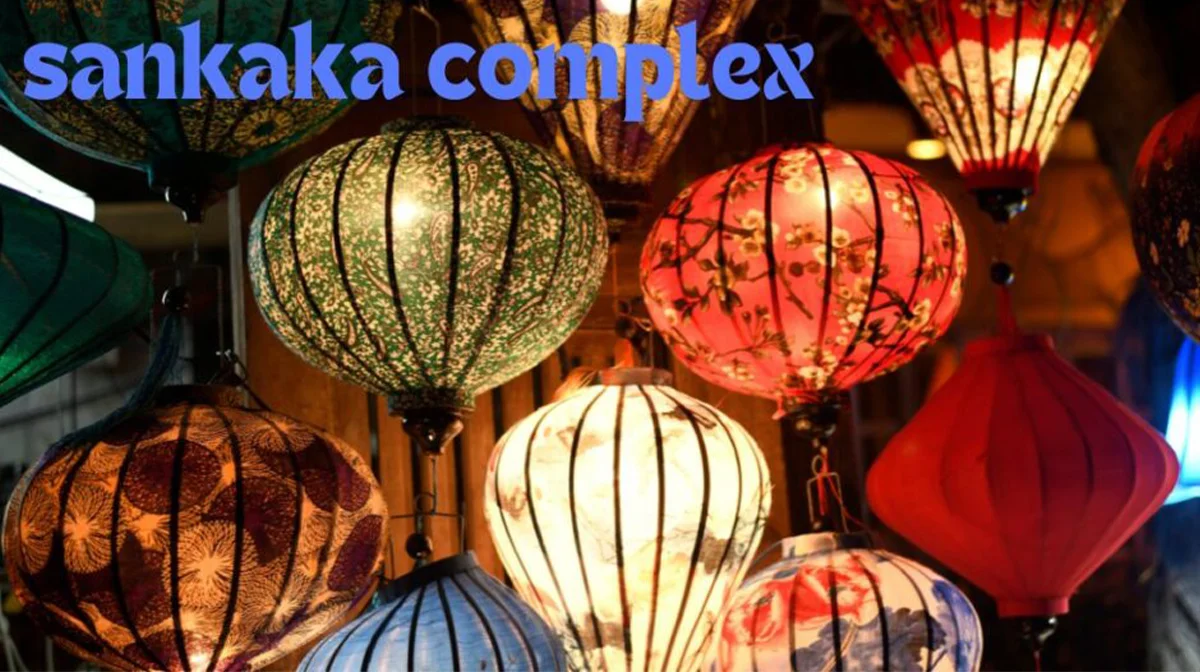The Sankaka Complex is a remarkable site of historical and architectural importance, known for its unique blend of cultural heritage and innovative design. Situated in a region renowned for its rich history and architectural marvels, the Sankaka Complex has garnered attention for its distinctive characteristics and its role in the broader context of regional development. This article provides an in-depth exploration of the Sankaka Complex, delving into its history, architectural features, cultural significance, and impact on contemporary society.
Historical Background
1. Origins and Construction
The Sankaka Complex’s origins trace back to the early 20th century, a period of significant development and transformation in the region. The complex was conceived as part of a broader initiative to modernize and enhance urban infrastructure, reflecting a shift towards more sophisticated and innovative architectural practices.
The construction of the Sankaka Complex began in the 1920s, during a time when architectural and urban planning principles were evolving. Influenced by a mix of traditional and modern styles, the complex was designed to embody both functionality and aesthetic appeal. The project was spearheaded by prominent architects and planners who sought to create a space that would serve as a cultural and social hub for the community.
2. Architectural Evolution
Over the decades, the Sankaka Complex has undergone various phases of development and renovation. Originally built with a focus on incorporating contemporary design elements of the time, subsequent renovations have added new features while preserving the complex’s historical essence. This evolution reflects broader trends in architecture and urban planning, showcasing how the complex has adapted to changing needs and technologies.
Architectural Features
1. Design and Layout
- Structural Design: The Sankaka Complex is renowned for its innovative structural design, which incorporates a blend of traditional and modern architectural elements. The complex features a mix of concrete, steel, and glass, creating a striking visual contrast while maintaining structural integrity. Its design emphasizes open spaces, natural light, and functional layout, making it both aesthetically pleasing and practical.
- Architectural Style: The complex exhibits an eclectic mix of architectural styles, reflecting influences from various periods and cultures. Key features include Art Deco elements, modernist forms, and traditional motifs. This combination creates a unique and harmonious aesthetic that distinguishes the Sankaka Complex from other architectural landmarks.
2. Notable Structures
- Main Building: The main building of the Sankaka Complex serves as a focal point, characterized by its grand entrance, intricate façade, and spacious interior. It houses various offices, exhibition spaces, and cultural facilities, making it a multifunctional hub for the community.
- Cultural Center: One of the standout features of the Sankaka Complex is its cultural center, which hosts a range of artistic and cultural events. The center includes exhibition halls, performance spaces, and galleries, providing a platform for local and international artists to showcase their work.
- Public Spaces: The complex also includes several public spaces, such as gardens, courtyards, and recreational areas. These spaces are designed to foster community engagement and provide areas for relaxation and social interaction.
Cultural Significance
1. Community Hub
The Sankaka Complex plays a vital role as a community hub, offering a range of services and facilities that cater to the needs of local residents. It serves as a venue for cultural events, educational programs, and social gatherings, contributing to the vibrancy of the community.
- Cultural Events: The complex regularly hosts cultural events, including art exhibitions, music performances, and theater productions. These events bring together people from diverse backgrounds, promoting cultural exchange and fostering a sense of community.
- Educational Programs: Educational programs and workshops are an integral part of the Sankaka Complex’s offerings. These programs cover a wide range of topics, from art and design to history and heritage, providing opportunities for lifelong learning and personal development.
2. Preservation of Heritage
- Historical Preservation: The Sankaka Complex is committed to preserving its historical and architectural heritage. Efforts are made to maintain the integrity of the original design while incorporating modern amenities and technologies. This balance ensures that the complex remains relevant and functional while honoring its historical significance.
- Cultural Representation: The complex serves as a representation of the region’s cultural identity and heritage. Its design and use reflect the values and traditions of the community, contributing to a sense of pride and continuity.
Impact on Contemporary Society
1. Economic Impact
- Tourism: The Sankaka Complex has become a significant tourist attraction, drawing visitors from around the world. Its architectural beauty, cultural offerings, and historical significance make it a popular destination, contributing to the local economy through tourism-related activities.
- Local Economy: The complex also has a positive impact on the local economy by supporting businesses and creating job opportunities. Its various facilities and events generate revenue for local vendors, hospitality services, and other related sectors.
2. Urban Development
- Catalyst for Growth: The Sankaka Complex has served as a catalyst for urban development in the surrounding area. Its presence has spurred the construction of new buildings, the revitalization of existing structures, and the enhancement of public infrastructure.
- Community Development: By providing a range of services and facilities, the complex contributes to the overall development of the community. It supports social cohesion, fosters cultural engagement, and enhances the quality of life for residents.
3. Architectural Influence
- Design Inspiration: The innovative design of the Sankaka Complex has influenced contemporary architecture and urban planning. Its successful integration of traditional and modern elements serves as a model for other architectural projects, inspiring designers and planners to explore new possibilities.
- Educational Resource: The complex also serves as an educational resource for students and professionals in the fields of architecture and design. Its design and construction are studied as examples of effective architectural practices and historical preservation.
Challenges and Considerations
1. Maintenance and Preservation
- Upkeep: Maintaining the Sankaka Complex’s historical and architectural integrity poses ongoing challenges. Regular upkeep and renovation are required to address wear and tear, technological updates, and changes in building codes. Balancing preservation with modernization is essential for ensuring the complex’s longevity.
- Funding: Securing funding for maintenance and preservation efforts is a critical consideration. Public and private support, grants, and donations are necessary to sustain the complex’s operations and preserve its heritage.
2. Adaptation to Modern Needs
- Technology Integration: Integrating modern technologies while preserving historical features presents a challenge. The complex must accommodate contemporary needs, such as advanced audiovisual equipment and accessibility features, without compromising its historical character.
- Changing Demands: Adapting to changing community needs and expectations requires ongoing evaluation and flexibility. The complex must evolve to meet the demands of a dynamic society while maintaining its core identity and purpose.
Future Directions
1. Continued Innovation
- Architectural Enhancements: Future developments may focus on incorporating innovative architectural solutions that enhance the complex’s functionality and sustainability. This could include green building practices, energy-efficient technologies, and new design elements that complement the existing structure.
- Cultural Expansion: Expanding the range of cultural and educational programs offered by the complex can further enhance its role as a community hub. Collaborations with local and international artists, institutions, and organizations can enrich the complex’s offerings and attract a diverse audience.
2. Strengthening Community Engagement
- Community Initiatives: Strengthening community engagement through targeted initiatives and outreach programs can deepen the complex’s connection with local residents. This includes increasing opportunities for public participation, fostering volunteerism, and supporting community-driven projects.
- Collaborative Projects: Collaborating with other cultural and educational institutions can enhance the complex’s impact and reach. Joint projects, exhibitions, and events can create synergies and expand the complex’s influence beyond its immediate area.
Conclusion
The Sankaka Complex stands as a testament to the rich history, cultural heritage, and architectural innovation of its region. Its significance extends beyond its physical structure, embodying the values and aspirations of the community it serves. As the complex continues to evolve and adapt to contemporary needs, it remains a vital and vibrant center for cultural, educational, and social engagement.
By addressing challenges, embracing opportunities, and fostering continued innovation, the Sankaka Complex can continue to make a meaningful impact on its community and beyond. Its legacy as a cultural and architectural landmark ensures that it will remain a source of pride, inspiration, and engagement for generations to come.



